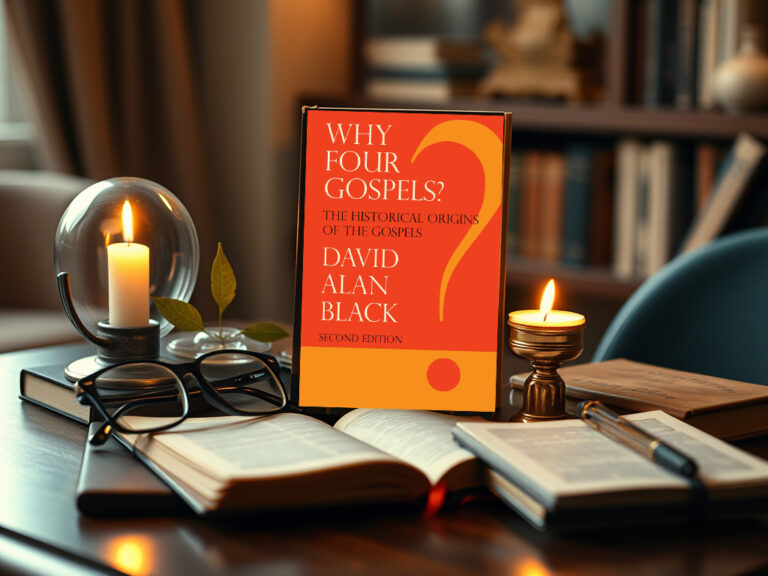Comparing Spiritual Things with Spiritual
by H. Van Dyke Parunak
 In studying the fornication clause in our Lord’s teaching on divorce and remarriage (Except for Fornication, Energion, 2011), I was impressed with how much later portions of the Bible assume the reader’s familiarity with earlier portions. (A scholar would call this phenomenon “intertextuality.”) In my book, the central insight is the dependence of our Lord’s words on Deuteronomy 22 and 24, along with his deliberate avoidance of the Old Testament vocabulary for divorce. Instead, he uses a contemporary term that (again based on the Old Testament) has a double meaning that is central to his position. I hope that these insights enable readers to come to understand the true meaning of the fornication clause. More generally, I hope they inspire readers to look for such linkages on other topics elsewhere in the Bible as well.
In studying the fornication clause in our Lord’s teaching on divorce and remarriage (Except for Fornication, Energion, 2011), I was impressed with how much later portions of the Bible assume the reader’s familiarity with earlier portions. (A scholar would call this phenomenon “intertextuality.”) In my book, the central insight is the dependence of our Lord’s words on Deuteronomy 22 and 24, along with his deliberate avoidance of the Old Testament vocabulary for divorce. Instead, he uses a contemporary term that (again based on the Old Testament) has a double meaning that is central to his position. I hope that these insights enable readers to come to understand the true meaning of the fornication clause. More generally, I hope they inspire readers to look for such linkages on other topics elsewhere in the Bible as well.
The longer I study the Bible, the more I am impressed with how often such references to earlier revelation occur. We ought not to be surprised at such references. Throughout biblical history, the people of God are challenged to evaluate new ideas by comparing them with earlier revelation. In Deut 13:12-17, Moses warns the nation not to tolerate the introduction of “other gods, whom you have not known” (v. 13). The Lord succinctly states the principle in Isaiah 8:19-20:
And when they shall say unto you, Seek unto them that have familiar spirits, and unto wizards that peep, and that mutter: should not a people seek unto their God? for the living to the dead? To the law and to the testimony: if they speak not according to this word, it is because there is no light in them.
God’s people are to reject any new revelation that does not conform to previous revelation. Our Lord makes the same point when he says, Think not that I am come to destroy the law, or the prophets: I am not come to destroy, but to fulfill. For verily I say unto you, Till heaven and earth pass, one jot or one tittle shall in no wise pass from the law, till all be fulfilled. [Matt. 5:17-18]
So it is entirely natural that a New Testament teacher would draw heavily from Old Testament passages in expressing his meaning. It is a way of assuring his hearers that he is not departing from the received truth, but rather building upon it.
This linkage of new writings to older ones happens within each testament, as well as between them. In the OT, Hannah’s prayer of thanksgiving in 1 Samuel 2 draws heavily on the patriarchal narratives in Genesis. The prophets are full of allusions to Deuteronomy, Psalms, and Proverbs, and Jeremiah and Ezekiel refer constantly to Isaiah. Within the NT, the book of Acts clearly reflects the teaching of the synoptic gospels, Paul regularly refers to the earthly teaching of the Lord Jesus, and the general epistles draw heavily on the Sermon on the Mount.
Of course, applying this method requires that the Bible student take a position with regard to the dates of the various biblical books. Modern “scholarship” often claims to reverse the dates that the biblical authors claim for their own works. Perhaps that’s why many commentators overlook these references between different parts of the Bible. For example, I believe that Moses wrote Deut. 18:20-22 in the second millennium B.C., so to me that passage sheds a great deal of light on the imprisonment of Micaiah in 2 Kings 22 (ninth century B.C.). However, many modern scholars think that Deuteronomy is a product of Josiah’s reform in the late seventh century B.C., long after the time of Micaiah, so they would never make this connection. My own commitment to the accuracy of Scripture leads me to accept the text’s own claims for its dating, and my personal experience is that the resulting sequence yields rich insights in later passages. Try taking this approach, and see what you find.
https://energiondirect.com/biblical-studies/except-for-fornication








I believe you have the right approach. It is sad that whole denominations downplay or outright ignore the Old Testament. Jesus quoted Deuteronomy in the wilderness temptations. He also quoted as literal the “hardest to believe” passages, such as Adam and Eve, Jonah and the big fish, and Noah in the worldwide flood. When the Jewish roots of the church got cut off (officially in 325 A.D.), a lot of biblical “scholarship” lost its moorings. Preceding the return of the Lord to Jerusalem, the Jewish roots “movement” is growing in order to make a people ready. Thanks for your diligent biblical analysis.
Blessings,
Nancy
H. Van Dyke,
You mentioned Hannah’s prayer. It’s neat how Mary quoted part of it!
Nancy